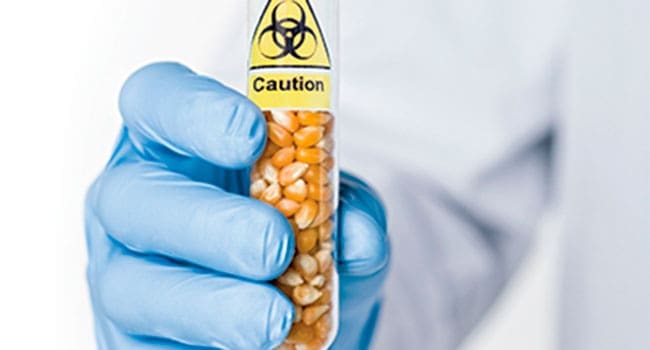 The UN’s annual World Water Development Report, published in March, warned that unless the balance between demand and supplies is restored the world will face a “global water deficit” of 40 percent by 2030.
The UN’s annual World Water Development Report, published in March, warned that unless the balance between demand and supplies is restored the world will face a “global water deficit” of 40 percent by 2030.
Two weeks ago, protestors in hundreds of cities in 38 countries rallied against agricultural research giant Monsanto’s genetically modified plant seeds (GMO). What do these seemingly disparate events have in common? The first issues an urgent call for action crucial to the future of mankind. The second denounced one the most promising ways of avoiding that impending crisis.
The UN report states that, “making water intensive sectors more efficient” is the only way of restoring supply demand balance. The most water intensive sector, by a huge margin, is agriculture. Not only do Monsanto’s drought resistant seeds need less water, but they also require less fertilizer, thereby reducing the weed nourishing runoff that pollutes lakes, rivers and streams.
The world scientific community is strongly supportive of genetic seed technology. The American Association for the Advancement of Science states, “biotechnology is safe”. The French Academy of Science agrees: “All criticism against GMOs can largely be rejected on scientific criteria.”
The national science academies of Germany, India and China as well as Britain’s Royal Society share the same view. And the World Health Organization states, “No effects on human health problems have been shown as a result of the consumption of GM foods.” This statement comes after trillions of GMO grown meals have been eaten over the past 15 years.
The March against Monsanto website alleges that studies show genetically modified foods “can lead to health conditions, such as the development of cancer tumours, infertility and birth defects.” Despite overwhelming scientific evidence to the contrary, millions of people believe this groundless propaganda, bringing to mind lyrics from Stevie Wonder’s hit song, ”If you believe in something that you don’t understand . . . that’s superstition.”
How could so many people have become convinced that GMO foods are dangerous? The answer to that question came in a shocking January 2013 speech by Mark Lynas, founder of the anti-GMO food movement. “We employed a lot of imagery about scientists in their labs cackling demonically as they tinkered with the building blocks of life. Hence, the Frankenstein-food tag. This absolutely was about deep-seated fears of scientific powers being used secretly for unnatural ends. These fears spread like wildfire . . . This has been the most successful campaign I have ever been involved with.”
Lynas’s redemption came when he finally decided to look at the science. He learned that GMOs require less fertilizer, thereby reducing nutrient rich runoff that causes fish-killing, oxygen-starved dead zones in weed-choked watercourses. He learned that pest-resistant seeds reduce insecticide use. And crucial to the UN report’s prime objective of reducing water consumption, he found that drought resistant plants lessen unsustainable depletion of water aquifers, rivers and lakes.
Contrary to his own Frankenfood label, he found that GMO research is actually safer and more precise than traditional plant genetics that “mucks about with the entire genome in a trial-and-error way.”
Unfortunately, these startling revelations from the creator of the anti-GMO movement have come too late to reverse the runaway Frankenfood religion with millions of converts around the world. Rather than convincing his congregation to abandon their misplaced faith, his personal redemption has only turned him into an apostate in the eyes of his former followers.
Given that GMO offers the most promising way of avoiding catastrophic global water and food shortages, one would think that environmental and food-aid groups would embrace GMO foods as a major advancement in humanity’s journey. Yet, sadly, most have bought into the Frankenfood myth.
The UN Food and Agriculture Organization estimates that agricultural use consumes 70 percent of global water withdrawals. The UN also projects a global population increase of more than one billion people by 2030. The collision of these two statistics means that, unless major reductions in agricultural water use can be achieved, dire shortages of both water and food affecting billions of people are inevitable.
The most severely impacted will be in Sub-Saharan Africa and the Indian sub-continent. It’s not surprising that the recent anti-GMO rallies were overwhelmingly concentrated in North America and Europe. You can be sure that none of the protestors were impoverished Africans or Indians who will bear the brunt of worsening water and food shortages.
Gwyn Morgan is a retired Canadian business leader who has been a director of five global corporations.
Gwyn is a Troy Media contributor. Why aren’t you?
The views, opinions and positions expressed by columnists and contributors are the author’s alone. They do not inherently or expressly reflect the views, opinions and/or positions of our publication.



Letter to the Editor:
Science, research and critical thinking triumphing over ignorance and
unfounded fears?!! To bad this guy had already caused so much damage to
science and progress. Bill Nye the
science guy just went through a similar “conversion” after deeply
researching the issue.
Eric Prouty